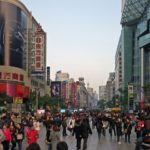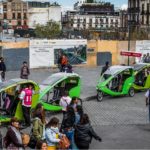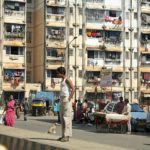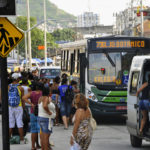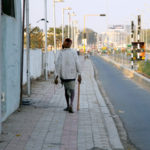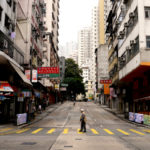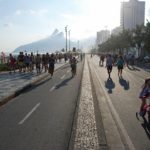Posts tagged with 'emissions'
Motorized vehicle emissions are a primary cause of air pollution and yield some of the most adverse impacts on public health. According to the World Health Organization (WHO), exposure to heavy traffic—even living near a major road—harms health and increases ...

Pedestrian-oriented streets not only are safer, improve air quality, and encourage physical activity, but also facilitate commercial and social activity. Although China has rapidly urbanized in the past few decades, many cities across the country are still not easily walkable. According ...

While cities need to address energy and climate challenges, national governments can play a critical role in enabling local action. As ministers from 23 countries highlighted at the Clean Energy Ministerial in Merida, Mexico last May, national governments can provide ...

From the breakdown of conventional ways of creating and sharing wealth to rising temperatures and increasingly extreme weather events, linear models of development are no longer providing an answer to the pressing challenges that the world is facing. At least, ...

A century of car-centric urban development has left our cities polluted, congested, and searching for sustainable solutions. Transport Demand Management (TDM) strategies can provide these solutions by combining public policy and private sector innovation to reverse over-reliance on private cars. ...

Investing in resource efficiency helps cities and their residents by cutting energy and water costs, creating jobs and creating cleaner, healthier air. And making cities more resource efficient is critical to reducing greenhouse gas emissions and combating climate change. Improving ...

It would take farm land the size of Mexico just to grow the amount of food that humans produce, but do not eat, every year. More food goes uneaten at the consumption phase of the supply chain—in places like homes, ...

In 2012 alone, Latin America saw 131,000 preventable air pollution-related deaths. To reduce emissions and improve air quality, it’s essential that public transit fleets—like buses—become more fuel-efficient. Adopting cleaner fuels—like natural gas or low-sulfur diesel—and upgrading to technologies that produce ...

By Lu Fu on April 8, 2015
This is the second installment of the China’s Clean Air Challenge series, exclusive to TheCityFix. This series examines the increasing social, environmental, and economic impacts of serious air quality issues in Chinese cities, and investigates the source of emissions and ...

In 2002, Brazil produced 60,000 metric tons of waste per day, 76 percent of which was disposed of in landfills with no long-term management or water treatment. In response to growing challenges with waste production and trash dumping, the country ...

Buildings are an important part of the sustainability picture for Mexico City. At least 20 percent of the city’s total greenhouse gas emissions come from buildings, with growth in coming decades expected to increase energy demand. This means that improving ...

Developing countries are projected to gain 2.2 billion new urban residents between now and 2050. Governments and city leaders have a choice: they can develop cities that are sprawled and auto-dependent, or they can develop cities that are connected, compact, ...

As China urbanizes, buildings in the country’s cities are a growing source of emissions and air pollution. Energy use from public sector buildings rose 15 percent between 2006 and 2010, and heat and electricity from emissions-intensive coal now account for ...

Rio de Janeiro is one of the world’s leading cities injecting sustainability into its planning. In 2011, Mayor Eduardo Paes enacted an ambitious climate change law, setting a goal to avoid 20% of its emissions by 2020, based on 2005 levels. There ...

Cities can drive better economic growth while also reducing climate risk. They are at the forefront of the fight to protect the climate and eradicate poverty, and are often trailblazers in a world in which nation states typically move more ...

Page 13 of 22« First...10...121314...20...Last »












